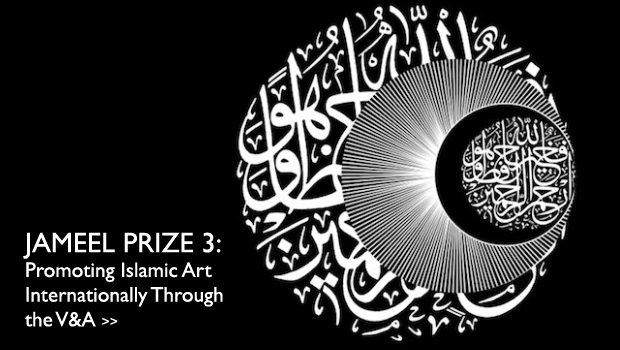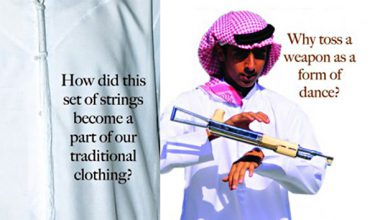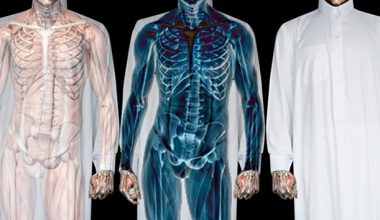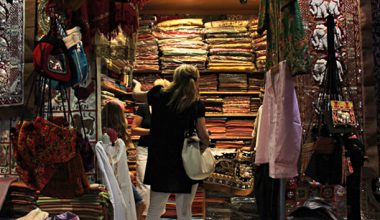The Victoria & Albert (V&A) Museum in London houses a permanent collection of an impressive 4.5 million decorative art and design objects-making it the largest in the world. Their extensive collection from across the different periods, regions and cultures dates as far back as 5,000 years. It is also the first institution to have been collecting Islamic art, in their dedicated section, the Jameel Gallery that opened in July 2006.
The Jameel Gallery houses pieces from the 7th century (the early Islamic period) all the way to the early 20th century. These include over 19,000 items of some of the greatest distinctly Islamic items of woodwork, ceramics and textiles from the Middle East and North Africa. In their effort to promote Islamic Art, the V&A and Abdul Latif Jameel Community Initiatives (ALJCI) have come together for their third edition of the prestigious Jameel Prize award.
Abdul Latif Jameel Community Initiatives (ALJCI) was founded in 2003 as the Community Services arm of the ALJ Group. Today ALJCI runs several different initiatives from individual, community and Arab life as a whole in Saudi Arabia and beyond. Their aim is to promote Arab arts and culture in the Middle East and around the world, working against the unemployment epidemic, enabling research for poverty alleviation, and providing education and training opportunities, ALJCI has successfully promoted positive social change.
The Jameel Prize, awarded every two years, is a £25,000 international art prize for contemporary artists and designers inspired by Islamic traditions of art, craft and design. It is a way to promote and broaden the understanding of Islamic art and culture around the world, and to lay emphasis on the relevance of those practices even in the modern times.

In March 2013, the V&A announced the shortlist of the final 10 artists from the 270 nominations received from around the world including for the first time from Algeria, Brazil, Kosovo, Norway and Russia. A panel of distinguished judges, chaired by V&A Director, Martin Roth, selected Faig Ahmed, Nasser Al Salem, Nada Debs, Mounir Fatmi, Rahul Jain, Dice Kayek, Waqas Khan, Laurent Mareschal, Florie Salnot and Pascal Zoghbi as the final 10 competing artists and designers. Their work ranges from Arabic typography and calligraphy to fashion inspired by the mosques and palaces of Istanbul and from video installation to delicate and precise meditative drawings.
The Jameel Prize 3 exhibition is curated by Tim Stanley, senior curator for the V&A’s Middle Eastern collection, with Salma Tuqan, the V&A’s curator of Middle Eastern contemporary art and design.
The Jameel Prize 3 was won by the duo from Turkey, Dice Kayek for their creation Istanbul Contrast, a collection of Istanbul’s architectural and artistic heritage. Dice Kayek is a Turkish fashion label by two sisters, Ece and Ayşe Ege. The sisters were born in Turkey but work between Istanbul and Paris and established their brand in 2010. They created Istanbul Contrast, a collection that evokes Istanbul’s architectural and artistic heritage. In Caftan, made of hand-woven lamé brocade, they reworked the robes worn by the city’s former Ottoman rulers. In Dome, lightweight cotton organdy was folded to echo the ribs of lead-covered domes of the city’s mosques and palaces. In Hagia Sophia, inspired by Byzantine mosaics, they created a white satin coat with complex, hand-stitched embroidery that incorporates ancient glass beads.

Some of the Participants in Jameel Prize 3:
Even though Dice Kayek won, there were a number of very interesting participants that took part in this respected competition, and who deserve notable mention.
Saudi based calligrapher, Nasser Al Salem works in mixed media and ink on paper. In Kul (2012), he explores one of the most dramatic forms found in the Arabic script – the combination of the letters kaf and lam that spell out the word kull, meaning ‘all’. He repeats the word on a diminishing scale to create a perspective effect that suggests infinity and all-inclusiveness, complementing the literal meaning of the word. In Guide Us upon the Straight Path (2013), he uses a new and evocative calligraphic style based on the ‘script’ of the monitor to write out a believer’s prayer.

Popular Lebanese furniture designer living in Japan, Nada Debs work titled Concrete Carpet (2010) is a large-scale piece that combines a new, light-weight form of concrete with contemporary Arabic font design. The ‘carpet’ is divided into 28 panels and each panel features a different letter of the Arabic alphabet, with one letter on each panel highlighted with mother-of-pearl inlay. The font was developed for Debs’s design business in collaboration with Pascal Zoghbi, also shortlisted for Jameel Prize 3.

Born in Tangier, Morocco, Mounir Fatmi divides his time between his city of birth and Paris. Fatmi works in multi-media installations to explore the art of Arabic calligraphy in different ways. One calligraphic convention is to arrange Arabic texts in impressive wheel-shaped compositions. In his video Modern Times: A History of the Machine (2010–12), he arranges these circular compositions literally as wheels, the parts of a noisy locomotive that hurtles forward relentlessly. The work highlights the dystopic nature of the man-made world – in the Middle East, ramshackle cities grow without stopping, while prestige building projects are commissioned on a vast scale. Fatmi will show Technologia (2010), a video that links this circular Arabic calligraphy and Marcel Duchamp’s Duchamp’s Rotoreliefs, the first examples of kinetic art.

Living in India, Rahul Jain is both a textile designer and historian. He set up a drawloom workshop in India, to re-create the exquisite Mughal silks of the 17th and 18th centuries. The workshop has five drawlooms weaving silk, gold and silver thread in the complex Mughal techniques, operated by Muslim weavers. The designs of The Snow Leopard (2007) and The Birds of Paradise (2008) follow the typical structure of the historical textiles, but Jain has interpreted the patterns in modern ways.

Hailing from Lahore, Pakistan, Waqas Khan has been trained in miniature painting. Khan uses these skills to create drawings that reflect Sufi mysticism with a technical pen on handmade paper, building up his images using a meticulous mark- making process. His drawings can be compared to buildings, constructed brick by brick. In his three works on display Forming Spaces III (2012); Forming Spaces IV (2012) and Letter to Lover 1 (2012), these ‘bricks’ are dots, marks and lines, assembled with precision and delicacy into a deceptively simple composition. He works without a magnifying glass, usually at night, holding his breath while drawing and exhaling only once the ink is on the paper.

French artist, Laurent Mareschal is concerned with the impermanence of life and uses Palestinian sources to reflect this. Mareschal always creates his site-specific works spices, soap, food and other daily life materials. He makes ephemeral patterns arranged to evoke such things as decorative floor tiles or traditional embroidery. The patterns are deliberately fragile, and the audience is free to participate in transforming them. For the Jameel Prize he will create a new work in his series Beiti, meaning ‘my house’.

Social designer, Florie Salnot, although born in France lives between London, Paris and Hamburg. She has been working since 2010 on her Plastic Gold project that has been inspired by the traditional jewelry worn by women from Western Sahara. The women live in refugee camps in the desert of Algeria. Salnot has taught these women to make jewelry using very basic materials they have access to including hot These necklaces made from discarded materials including plastic bottles will be on display.

The work of the shortlisted artists will be exhibited at the V&A from 11 December 2013 – 21 April 2014.
A series of specially commissioned short films on each artist and designer can be viewed online at www.vam.ac.uk/channel
For more information on the Jameel Prize, click here.
– Saira Malik







